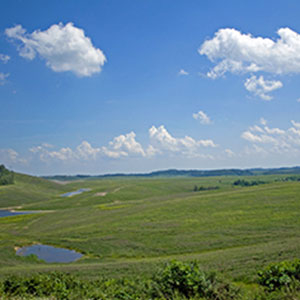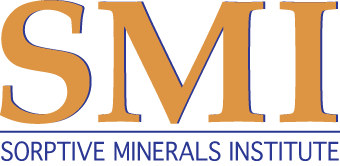To ensure the continued viability and vitality of the sorptive minerals industry by integrating sustainability principles into our operations by:
- Practicing responsible environmental stewardship in managing our mineral resources;
- Respecting and enhancing the health and welfare of the people and the communities in which we operate and;
- Providing economic value to our companies, our employees, our shareholders/investors and our communities.
The SMI members are proud of their record as good stewards of the environment. They recognize that the mining process, by its very nature, disturbs the existing environment. They take great care to minimize the impact of their activities and to ensure that the land is left in a better condition after mining than when they found it.
The Mining Process
Learn how the mining process carefully extracts absorbent minerals and see how the methods of land reclamation restore and improve ecosystems.
Learn More
The Mining Process
The Mining of Sorptive Minerals
The process of extracting sorptive minerals actually begins with a complete environmental evaluation of the proposed mine site. This is done to determine the potential impact that the removal process will have on the soil, vegetation, hydrology and wildlife. The evaluation provides the basis for the reclamation work that will occur after the mining has been completed. Appropriate permits are then obtained from local, State and Federal agencies, depending on the ownership and location of the land to be mined. Prior to any disturbance sufficient bonding is provided to assure the responsible governing agencies that reclamation will be accomplished according to the plan laid out in the permit.
Once the necessary permits have been secured, mining begins using standard surface mining techniques. This relatively simple process involves removing the overburden materials, using large scrapers, bulldozers and backhoes, in order to expose the clay mineral deposit. The various overburden components, consisting of top soil, sub soil, useful spoil and non-useful spoil, are carefully segregated as they are removed and, depending on the type of mining operation, may be individually stockpiled for future use or immediately replaced in another part of the mine area. The exposed mineral is then extracted using the same mining technique. The extraction process is only half of the mining process, which includes the essential tasks of restoring, and in most cases, improving the quality of the mined land.
Ensuring Environmental Longevity
After the mineral has been removed, the overburden materials are replaced in the reverse order that they were removed, contoured to allow for proper drainage and prepared for reseeding. Using the initial environmental study as a guide, native plant species are planted to re-establish a diverse, self-sustaining vegetative community suitable for the post-reclamation use of the land. Frequently, new ponds and other enhancements are added making the reclaimed land more attractive and a better habitat for local wildlife. As a result, reclaimed lands are often in better condition than they were prior to the mining activity.
Once the reclamation process has been completed, federal, state and local officials inspect the results to ensure that all of the possible environmental issues have been addressed and that reclamation has been completed according to the mining plan laid out in the mine permit. After this determination is made, the land is deemed to be reclaimed and the reclamation bond is released.

